#Ask a Mortician
Explore tagged Tumblr posts
Text
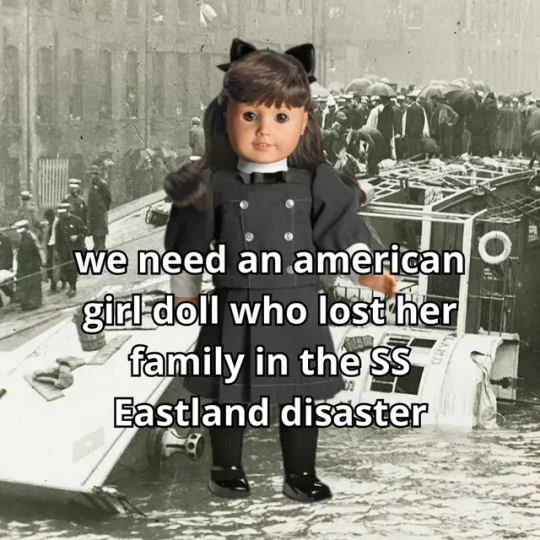
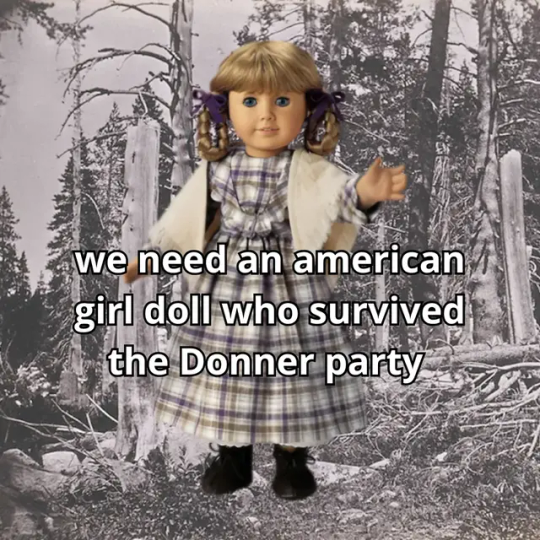



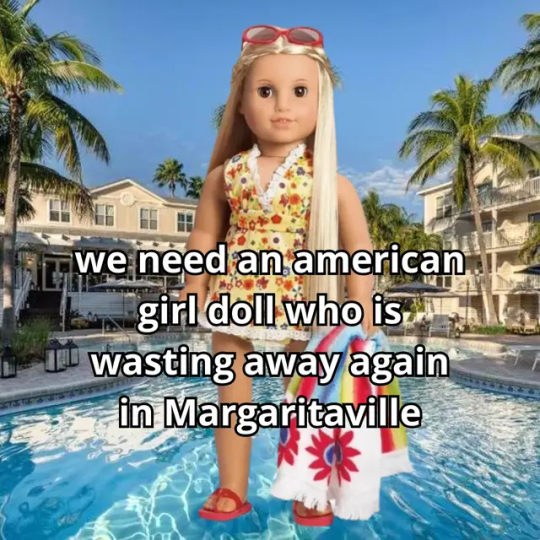
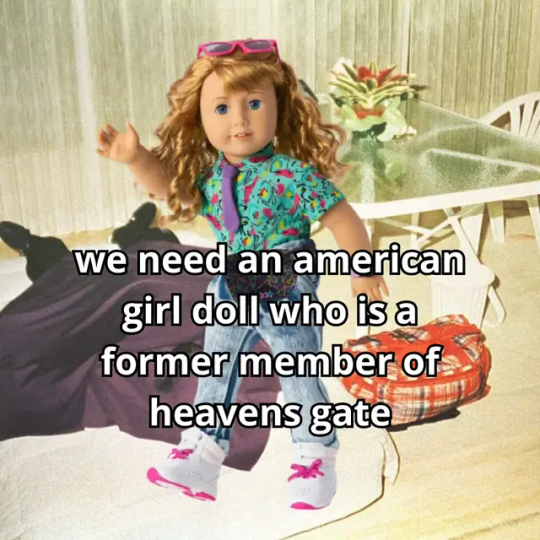
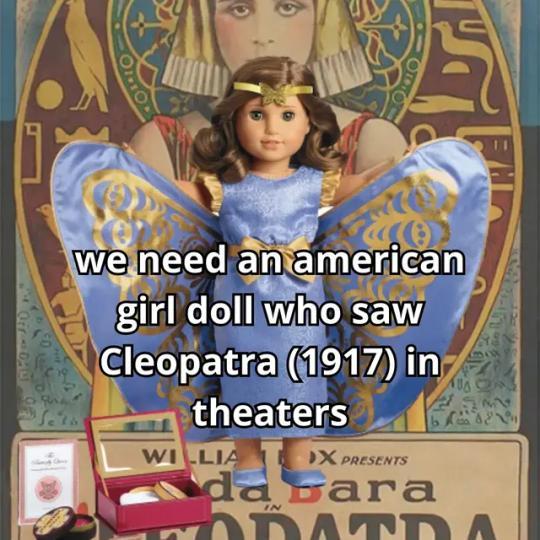
I like history, memes and American girl dolls. Here's the union of all these.
#ss eastland#donner party#dancing plague#appalachian trail#molasses#boston#margaritaville#heavens gate#cleopatra#theda bara#american girl#american girl dolls#history#meme#wendigoon#ask a mortician#kaz rowe#niche memes#is this too niche
3K notes
·
View notes
Text
At almost any location in any major city on Earth, you are likely standing on thousands of bodies. These bodies represent a history that exists, often unknown, beneath our feet. While a new Crossrail station was being dug in London in 2015, 3,500 bodies were excavated from a sixteenth- and seventeenth-century cemetery under Liverpool Street, including a burial pit from the Great Plague of 1665. To cremate bodies we burn fossil fuel, thus named because it is made of decomposed dead organisms. Plants grow from the decayed matter of former plants. The pages of this book are made from the pulp of raw wood from a tree felled in its prime. All that surrounds us comes from death, every part of every city, and every part of every person.
Death avoidance is not an individual failing; it’s a cultural one. Facing death is not for the faint-hearted. It is far too challenging to expect that each citizen will do so on his or her own. Death acceptance is the responsibility of all death professionals—funeral directors, cemetery managers, hospital workers. It is the responsibility of those who have been tasked with creating physical and emotional environments where safe, open interaction with death and dead bodies is possible.
— From Here to Eternity: Traveling the World to Find the Good Death, Caitlin Doughty
#dead man's bones#death avoidance#death acceptance#Caitlin Doughty#Ask a Mortician#From Here to Eternity: Traveling the World to Find the Good Death#From Here to Eternity#books#bookblr#death positive#death positive movement#nonfiction#science#history#travel#anthropology#memoir#sociology#atypicalreads#deathcare#cw death
324 notes
·
View notes
Text
In light of my most recent review (Piss Christ), I wanted to talk a little bit about a personal pet cause of mine. There's over 300 of you, I can subject you all to my favorite little interests. >:3
Since I discussed our revulsion and distance from death, I think it'd be good to mention The Order of the Good Death. If you don't know about them, you probably know of one of their founder Caitlin Doughty or, as you might know her, Ask a Mortician over on youtube.
One of their big things is Death Positivity, basically encouraging people to speak about death frankly and without any stigma. Being able to have proximity to our dead can help us mourn. Different cultural groups should be able to practice their funerary practices even if we think they're weird or gross.
They're big on green burial (being buried not in a concrete box in the ground, without chemicals harmful to the environment), and legalizing human composting. Which, ik, that sounds kinda scary to some people, but y'know that "grow a tree with your ashes!" thing? 1. That shit is bullshit, cremains won't help a tree, they're sterile ash. 2. It's basically a version of that, but it actually works. It's just giving your body back to the earth. Not for everyone, but it should be an option!
They're also working on guides for queer people in like, end of life care and self advocacy for your death plan.
Also, if anthropology is your jam, check out From Here to Eternity by Caitlin Doughty, cause it's a great book on death practices around the world.
Anyway, overall I just recommend checking them out. I talk a lot about death here and the eroticism of rot, I figure some of you may have an interest. I'll link some of Caitlin's videos that I really like below the cut, cause she's funny, and death is super fucking interesting.
youtube
youtube
youtube
youtube
youtube
55 notes
·
View notes
Text
Shout out to the incredibly specific but not insignificant amount of autistic goths with special interests in death/mortuary arts and historical fashion I know you're all watching the fuck out of Caitlin ask a mortician Doughty and Bernadette Banner
43 notes
·
View notes
Text
“Do you not like deep water? Claustrophobia? Darkness? Well, you’re not going to like this!”
I love Ask a Mortician. I never would have thought to ask a mortician about a 19th century submarine but I am excited to learn anyway
31 notes
·
View notes
Text
youtube
Caitlyn Doughty, Ask A Mortician, "What did (Oliver) Cromwell do to deserve this?"
I love that this video implies among other things, that one of the perks of attending Cambridge University is that if your embalmed and posthumously severed head is donated to them, they will find a place for it in perpetuity.
#caitlin doughty#ask a mortician#Oliver Cromwell#the wrong cromwell#also this video uses snippets from the Richard Harris/Michael Jayston film Cromwell#BB Jay#Youtube
8 notes
·
View notes
Text
Death, dying and funerals in the Netherlands (pt 2)
The part in which we discuss options
My dad died this monday and as it turns out: funeral planning takes a lot of time. This part will go into more detail about your options of what can be done with your body. And also why one may want to subject their funeral director to police-level interrogation. My dad's final trips.
Part 1
So, same tw as part 1 on all of this: cancer, death, dying, corpses, handling corpses in various ways, funerals, undertakers, huge sums of money, insurance company (derogatory), religion
So where will the body go?
So, your loved one has died. You got to give them their final care and they are now "opgebaard" (ready for viewing). Now it is time to choose how to "dispose" of the body. There are several options you can choose. Before I continue with my dad's story, it's good to tell you a bit about what each involves:
Body donation
It is possible to choose to donate your body to science. If you go for this option, the body will be picked up within 24h of death to be taken to wherever donated bodies go. Before that, it is possible to spend time with the body and say your goodbye's. My grandma's sister opted for this. There was no final service.
Cremation
You can also have your body burnt. This happens at indoor crematoria. The funeral service is done prior to the cremation as Dutch law requires the ashes to stay at the crematorium for 30 days after cremation. My grandparents on my dad's side went for this. Both times we had a service at the crematorium. Songs were played, memories recounted and poems were read. The services were non-religious in this case. I remember my grandpa had a sea shanty play. After the service there was food either at the crematorium or at family. Coffee and a snack or some soup is common. The ashes can later be kept in an urn or scattered. You may also bury them in an "urn grave".
Burial
Burial is where some people may get surprised. In the Netherlands, "eternal rest" is not a given. In most cemeteries, you don't buy a plot, you lease one. After the initial period expires, the grave will be cleared so it can be used for someone else. There are two types of rental graves: algemeen (general) and particulier (private). With an "algemeen graf" the cemetery determines how long your loved one can stay in there. Often 20 or 30 years. Extending the lease is oftentimes not possible. When the lease passes, the grave will be cleared. Private graves also tend to start at 20 or 30 years but family can choose to keep extending the grave lease if they wish. Urn graves are the same in this.
Dig up that grave
When a grave gets cleared, there are several things that can be done with the remains: they could be reburied deeper (if possible). They can be cremated and the ashes given to family. They can be reburied in another grave chosen (and paid for) by family or they can be reburied in a common grave (aka: the big grave, some may call it a mass grave). Either way, exhuming a grave is not an ordeal legally speaking, it's just a part of life and death. The Netherlands is a small country with limited grave space and so we have to be efficient.
Eternal rest
Sometimes rental graves can be hard on people. Will you choose to renew the grave of your child or father who died way too young? It is not gonna bring them back and it is a big chunk of money, especially if your funds are low. Is it really worth it to extend the geave lease of people you never knew? Fortunately, nowadays there is a way to never have to worry about this: natural burial.
At a natural burial ground, you pick a grave in the middle of nature. The grave often gets a temporary wooden marker. Once it has decomposed, you might be able to get a new marker, but after that one's gone, the grave is unmarked and can only be found via GPS coordinates. After all the graves on the burial ground have been filled, it will get turned over to Natuurmonumenten (natural monuments) who will take care of the area and ensure that it stays pristine and undisturbed. This means that graves will not be dug up. The bodies are left to decompose naturally in the soil. Sometimes in a coffin, sometimes in a shroud and their relatives will never have to make a decision about the grave lease.
This is what my parents chose. They went to a natural burial ground and picked a plot where they can be buried together on top of one another. It is a good fit for my dad, who always loved to be out in nature. I'm glad they got to choose together. Though I do hope I won't have to bury my mom anytime soon.
But what's with this insurance stuff?
Oh, insurance, I could probably dedicate entire posts to how much of a pain dealing with our insurance/funeral director has been at times. Dutch funeral insurance often takes the form of a sum of money to spend on a funeral. You can use it to pay to buy or lease a grave, but since my parents already paid for theirs, the insurance fee is used for things like cards, transport, renting the ice plate, renting space to keep the body and catering. Yup, catering. It is also possible to get a package. Grave/cremation + all needed services or a combination thereof (grave/cremation + a sum of money to spend on other funeral stuff).
Between life and death: corpse hauling
So this is where my dad's story gets absurd. So far, my dad's body has been in basically all the places you can store a body (for viewing and just storage).
First, we kept him at home. We didn't want to keep him there for too long though, as we didn't think he would've appreciated it (he was never one to confront death). He died monday in the early morning and was picked up by the hearse tuesday late in the afternoon.
Them he was brought to the crematorium's cooling. We were not allowed to follow. We found that out just as he had left the house.
Those 90 FUCKING EUROS
Wait, the crematorium? Didn't you go for burial? Well yes, the reason we had him transferred there is that we thought that should we have him transferred there, we would have access to a so-called 24h room. Turns out that wasn't the case. The crematorium doesn't have a 24h room and we'd have to pay 90 FUCKING EUROS PER VISIT! We were not informed about this nor about that a "visit" is only 45 minutes, needs to be requested via the funeral director and that the crematorium apparently doesn't work with digital systems or something, because appointments may only be made during working hours as the people who put them in the agenda are not there later in the day!
I repeat: 90 FUCKING EUROS to be in a room with a corpse for 45 minutes. For that money I can buy a museum card, spend the entire year looking at corpses daily, bog body, mummy, skeleton, plenty of choice and still have enough money left to buy a sandwich.
Needless to say, we were Not Happy. She did fix it fairly quickly by getting him transferred to a 24h room the next day, but yeah, that's another car ride, another corpse transfer, more costs. My dad was being driven all over town I tell ya
But .. how?
Alright, the funeral director was set at the table and we were talking about planning the funeral (more about that next post), at some point she made an offhand comment about if we wanted to view the body. We said yes. So she was like"okay, so I'll add a mourning visit" and that was it.
She did not explain that it would be a 45 min visit and that if we wanted more visits it'd be more money. I get it costs money. After all the workers have to get the body in and out of the cooling, into the room for a viewing, keep that room clean, keep the refrigeration running etc, but it would have been nice to get informed before we made that uninformed choice we did.
We thought (based on my BIL's experiences with his family being viewed outside the house) that his body would be put in a room and we'd just get a key to access it basically whenever we like. This was not the case. It was never explained to us. And thus we were totally surprised when the hearse driver told us to make an appointment and (respectfully) drove off towards the crematorium with my dad.
So this is why you interrogate your funeral director, kids. If you're lucky, you get one who understands that not everyone is well-versed in funeral options and may be tired and will explain everything in explicit detail but if not, you may find your grieving process disturbed by having your access to the corpse limited without informed consent.
In the end, my dad spent a night at the coolig where his parents were also kept. We jokingly said he paid the place their bodies stayed at a visit. He is now at the 24h room.
The last home for the dead
A 24h room is a fantastic way to say goodbye. It is a dedicated room where the body is kept and the family can just come in and spend time with it whenever they want or need. The atmosphere is homey and calm. In this particular room, the corpse is off to the side and can be hidden by curtains. One can choose to view him or just spend time on the couch talking with the relatives, enjoying a cup of tea or playing a game. The dead person is there, but life can happen too. It's a space between regular life and the reality of death. I personally find I quite like it. My dad would not want to be kept at home until the funeral, that wouldn't fit him. But I think he'd be okay with this option. It's more expensive than a visit to the crematorium, but you have the freedom to come whenever you feel ready and that is worth its weight in gold. Here he will stay until it is time for his final trip: to church and then to his grave.
Next up in Fire's Funeral Adventures: how to plan a Dutch Funeral (ft. Frustration)
#non sims#rl stuff#tw death#tw funeral#dutch culture#netherlands#ask a mortician#tags may suggest i am a mortician or that this is related to the youtube channel but neither is the case#this is just 'death education'
11 notes
·
View notes
Text


With and Without Glasses because blue eyed people are hilarious. Based on my favorite ask a mortician screencap

#superjail#the warden#adult swim#ask a mortician#caitlin doughty#eyestrain#existentialism#disassociation
24 notes
·
View notes
Video
youtube
What Did Cromwell Do to Deserve This?
#i love this woman's videos#they're so damn interesting and fun#caitlin doughty#ask a mortician#oliver cromwell#english history#morbid history#dark history#1600s#english monarchy
11 notes
·
View notes
Text
i would love to grab a drink with caitlin doughty and just listen to her talk about dead bodies
18 notes
·
View notes
Text
Caitlin Doughty (Ask a Mortician) does such important work with her youtube channel and her nonprofit Order of the Good Death, as well as the books she’s written (I’ve read them all).
She is also bringing awareness to how cruelly animals are treated in this video she just posted. Animals continue to perform for people to this day.
Please keep in mind it’s heartbreaking and hard to watch but I think it important.
Also, youtube is treating her and her channel like a pariah and she depends on her patrons.
YouTube has taken her videos down before.
youtube
Even if you don’t watch this particular video I think she’s doing such vital work and changing the way we confront death. So check her channel out!
And check out:
#ask a mortician#caitlin doughty#youtube#tyke the elephant#elephant#🐘#stop animal cruelty#trigger warning animal abuse
133 notes
·
View notes
Text





Honestly shout out to Caitlin Doughty for being the funniest mortician in the entire business while also not being afraid of giving honest answers
- excerpts from "Will My Cat Eat My Eyeballs? Big Questions from Tiny Mortals about Death" by Caitlin Doughty
#reading her books has helped me process so many things that i wasn't handling as well as i thought i was tbh#caitlin doughty#words#quotes#will my cat eat my eyeballs?#ask a mortician#**#*words
56 notes
·
View notes
Text
In Toraja, during the period of time between death and the funeral, the body is kept in the home. That might not sound particularly shocking, until I tell you that period can last from several months to several years. During that time, the family cares for and mummifies the body, bringing the corpse food, changing its clothes, and speaking to the body.
The first time Paul ever visited Toraja, he asked Agus if it was unusual for a family to keep a dead relative in the home. Agus laughed at the question. “When I was a child, we had my grandfather in the home for seven years. My brother and I, we slept with him in the same bed. In the morning we put his clothes on and stood him against the wall. At night he came back to bed.”
Paul describes death in Toraja, as he’s witnessed it, not as a “hard border,” an impenetrable wall between the living and the dead, but a border that can be transgressed. According to their animistic belief system, there is also no barrier between the human and nonhuman aspects of the natural world: animals, mountains, and even the dead. Speaking to your grandfather’s corpse is a way to build a connection to the person’s spirit.
— From Here to Eternity: Traveling the World to Find the Good Death, Caitlin Doughty
#indonesia#Toraja#mummification#death acceptance#animistic#Caitlin Doughty#Ask a Mortician#From Here to Eternity: Traveling the World to Find the Good Death#From Here to Eternity#books#bookblr#death positive#death positive movement#nonfiction#science#history#travel#anthropology#memoir#sociology#atypicalreads#deathcare#cw death
70 notes
·
View notes
Text
corpse disposal - the elements
air: sky burial
water: aquamation
fire: open air funeral pyre
earth: composting
#gossamurmurs#obviously there's others that also fit like cremation and water burial but i like less conventional things lol#death positive#memento mori#the good death#ask a mortician#caitlin doughty
56 notes
·
View notes
Note
What is the difference between a coffin and a casket?
youtube
Caitlin Doughty has said it better than I ever could.
-Reid
44 notes
·
View notes